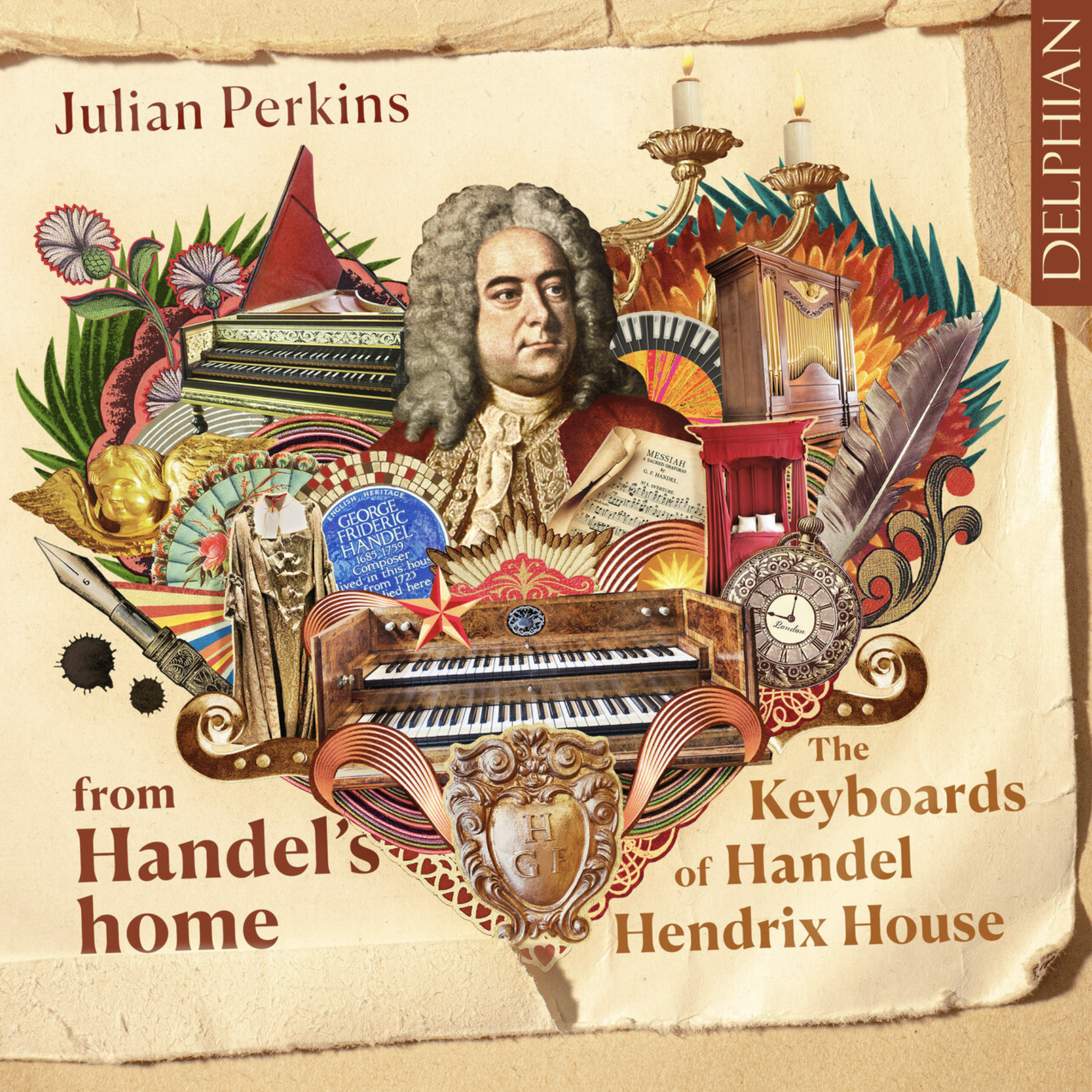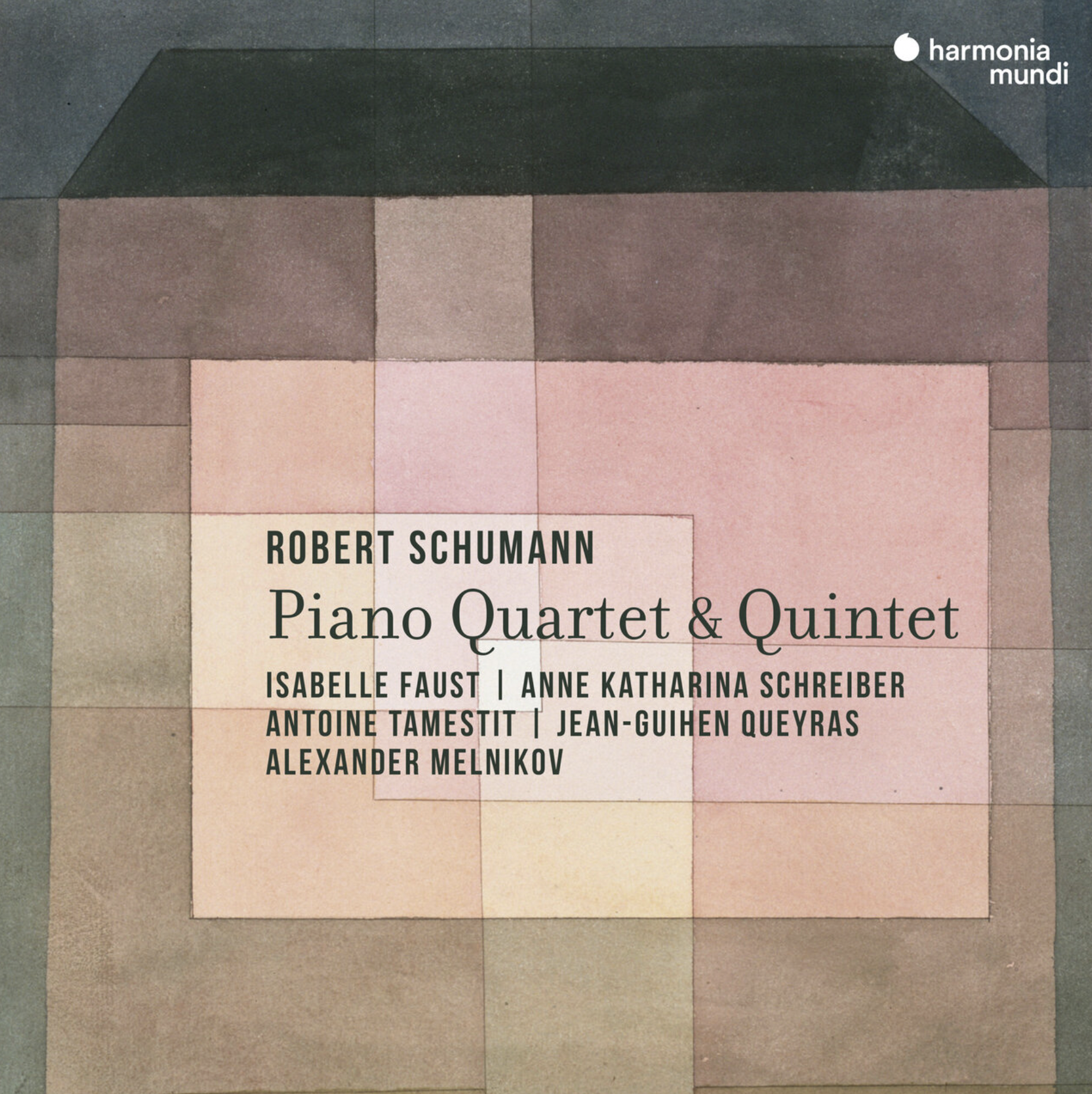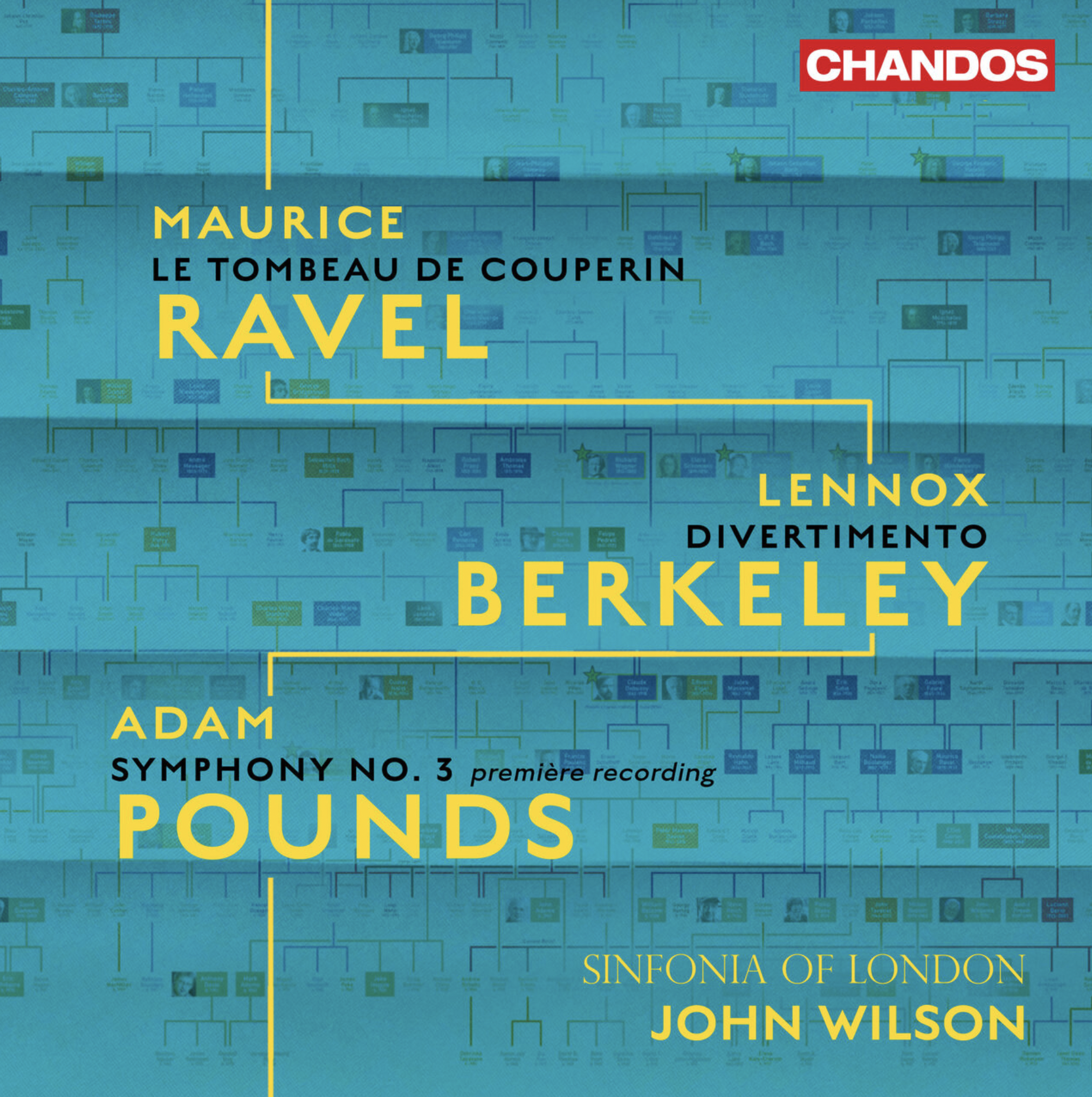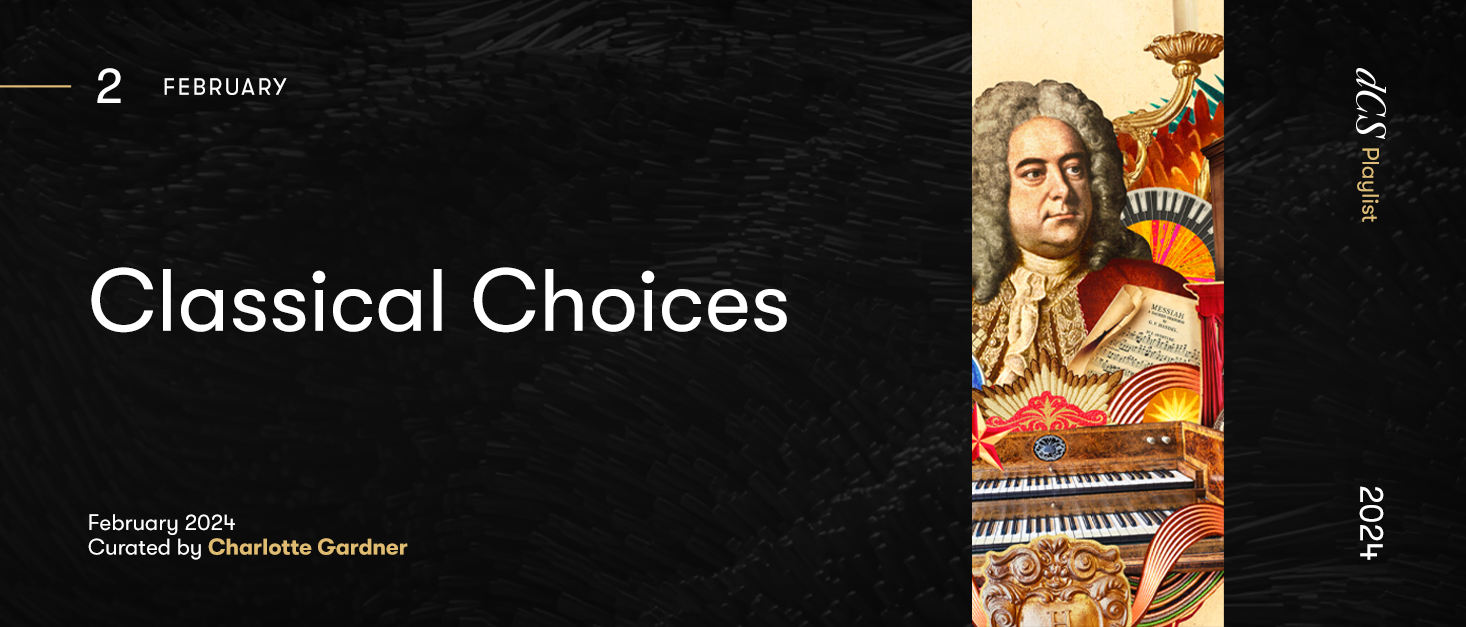This month’s Classical Choices playlist includes a new Handel-themed programme from period keyboard specialist Julian Perkins, the latest addition to violinist Isabelle Faust, cellist Jean-Guihen Queyras and pianist Alexander Melnikov’s Schumann cycle for Harmonia Mundi, and a recital of orchestral works by Maurice Ravel, Lennox Berkeley and Adam Pound, courtesy of John Wilson and London Sinfonia.
All these are preceded by our archive choice – another Handel piece – inspired by the upcoming anniversary of his birthday on March 5th. In honour of the occasion, we have a suitably celebratory track, Zadock the Priest (written by Handel to mark the coronation of George II in 1727), as recorded by Trevor Pinnock, The English Concert and Westminster Abbey Choir in 1982.

From Handel’s Home: The Keyboards of Handel Hendrix House
Julian Perkins
Delphian
Album openers can be misleading: as the old adage goes, you should never judge a book by its cover. Yet the gloriously loud Handel-themed pop-art collage which opens Julian Perkins’ latest recital feels like a wonderfully eloquent trailer for the explosion of contrasting tones, timbres, textures and styles to be found within.
Perkins’ new offering was recorded at the Handel Hendrix house in Mayfair: a museum set in a period building that was once home to George Frideric Handel and, 200 years later, Jimi Hendrix. The house holds a substantial collection of keyboard instruments. There are spinets, organs and harpsichords, both originals from Handel’s day and reproductions, representing a roll call of some of the greatest makers, from Kirckman and Snetzler to Goetze & Gwynn and Bruce Kennedy’s Colmar Ruckers copy.
These can be heard to wonderful effect inside the house thanks to its intimate proportions, wooden floors and parcity of soft furnishing.
The collection represents a veritable galaxy of sound. Inspired by its treasures, Julian Perkins has fashioned a cornucopia of keyboard works by Handel and his contemporaries. This is rounded off with a contemporary piece (Sarabande, from Rhian Samuel’s Isolation Suite, composed during summer 2020). The programme also features a premiere recording of William Babell’s Toccata No 9 in G minor, performed on Michael Cole’s single-manual harpsichord after a c.1720 model by William Smith.
It’s a wonderful collection. The twists, turns and fresh pleasures just keep coming, delivered with constant ebullient, loving charm and lyricism, and warm virtuosity. It’s almost impossible to single out highlights, but Bruce Kennedy’s magnificent double-manual Rucker copy is the perfect high-impact choice for the curtain-raiser, Handel’s RodelindaOuverture. The Rucker makes another delectable appearance later for the Suite in C minor for two keyboards HWV 446. For this, Perkins is joined by Carole Cesari on an original double-manual Kirckman from 1754. Elsewhere, an entirely different treat sees the pure treble tones of Goetze & Gwynn’s single-manual organ, after a 1749 Bridge & Parker instrument, matched with Handel’s A Voluntary or A Flight of Angels HWV 600.
I’ve given you the two-keyboard suite for our playlist, followed by the Sarabande from Rhian Samuel’s Isolation Suite.

Schumann: Piano Quartet & Piano Quintet, Faust, Schreiber, Tamestit, Queyras, Melnikov
Harmonia Mundi
If you’re already familiar with the period-instrument Schumann cycle being steadily released by violinist Isabelle Faust, cellist Jean-Guihen Queyras and pianist Alexander Melnikov, then I won’t have to work hard to convince you of the merits of this latest all-chamber offering. The trio has teamed up with two more of their long-time collaborators – violist Antoine Tamestit and longstanding Freiburger Barockorchester violinist Anne Katharina Schreiber – to present Schumann’s Piano Quartet and Piano Quintet.
The period instruments alone are enough to guarantee a different and wonderful new lens through which to experience these famous works – and indeed the combination of the earthily sinewy personality of the gut strings, and Melnikov’s airier, lighter piano sound (an 1851 Érard), are major factors in the resulting magic this album delivers.
Ultimately though, what makes this project is the musicians’ loving intimacy with Schumann’s multi-coloured world and its performance practice, together with their joyous sympathy towards each other. Emotionally it’s all here too, from vulnerability to unbuttoned merriment. The Quartet’s Andante cantabile, always to be revelled in, is a special treat for Faust’s neatly pronounced portamentos, the flexible tempi, and the deferential delicacy with which those without the melody rhapsodise around whoever is carrying it. The use of rubato and dynamics over the final layering of broken chords and contrary motion scales as the movement draws to its soft conclusion is perfection.
There are plenty of treasures to be discovered in the quintet, such as how the funeral march comes with far more airy silence between its notes than usual (meaning that it sounds in fact exactly as it looks on the score), and smartly hits the balance suggested by its un poco largamente directive. In this context, the ravishing, kaleidoscopic dreamworld that is painted over the smoother espressivo ma sempre interludes feel even more striking, and the Finale’s fugal writing is fabulously crisp-edged and conversational. I’ve selected the Quintet for the playlist.

Ravel, Berkeley, Pounds: Orchestral Works
Sinfonia of London, John Wilson
Chandos
The three composers on John Wilson and the Sinfonia of London’s latest album are all interconnected. Maurice Ravel mentored Lennox Berkeley, after meeting him in London, where Berkeley was working as an interpreter and tour-guide. Five decades on, Berkeley taught Adam Pounds, giving him private lessons in composition.
This chain of influence can be heard in the selected works featured here. Ravel’s four-movement Le Tombeau de Couperin orchestration of 1919 is a clean-lined, Baroque-inspired neoclassical suite, each movement dedicated to a different friend of Ravel’s who fell during the First World War. Berkeley’s Divertimento is also a four-movement suite. Commissioned by Sir Arthur Bliss in 1942 for the BBC Symphony Orchestra, it combines a British jauntiness with clean-lined French insouciance. Pounds’ Third Symphony, written in 2021 as a response to the national Covid lockdowns, exudes similar qualities and uses similarly modest orchestral forces, capturing the ‘sadness, humour, determination and defiance’ people faced during this time.
The Ravel sparkles here: it’s all fantastically crisp, rhythmically vibrant, with a fabulous bright sheen. Dance feels everywhere – just listen to the Forlane’s weightless spring and perkily bouncing woodwind. With the Menuet, there’s a fabulous rubato-injected, semi-swaggering sensuousness to its central climax, and the portamento glide with which the violins travel up to their high G while decrescendo-ing down to pianissimo in the closing bars is just heavenly.
It’s more elegant rhythmic pep for the Berkely, plus a more Britishly unbuttoned buoyant confidence. The Pound,receiving its world premiere recording, is dedicated to Wilson and the Sinfonia, who sound fully under the skin of its complex melange of emotions. The first movement displays by turns sombre darkness, unsettled anxiety, jagged alarm and strange peace. Next, a darkly swinging, timpani-strong Waltz unmistakably channels Shostakovich, before a funeral-march-esque Elegy ‘homage to Anton Bruckner’. The finale encases a tense, time-suspended central Largowithin sleek-edged marching outer ends, working to a thundering climax. It’s the Pound I’ve selected for this month’s playlist.

